Growing Viburnum plants is a fun and easy way to add beauty to your landscape. These deciduous shrubs tolerate most soils and can grow in various locations, including full sun or partial shade. To grow Viburnum plants successfully, be sure to provide them with ample sunlight, water, and fertilizer.
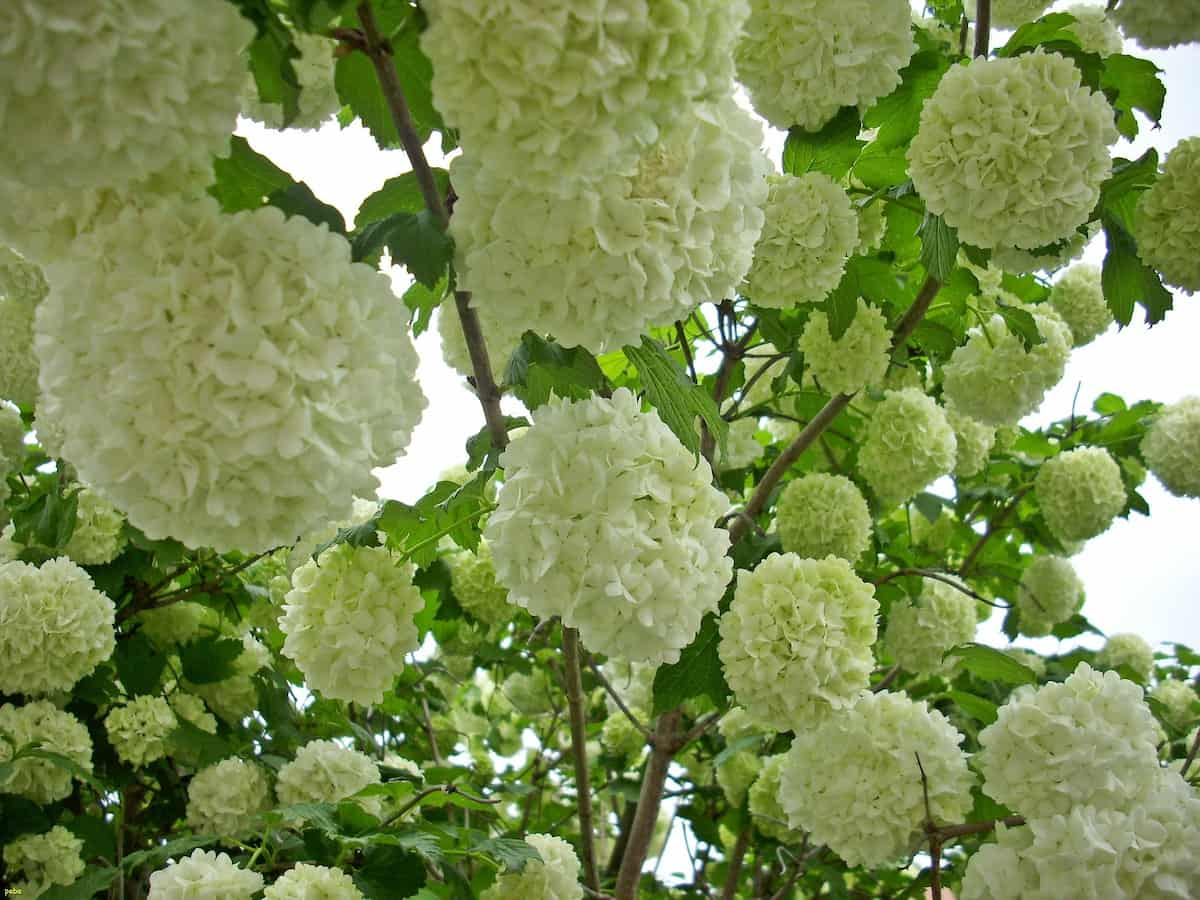
You can create a beautiful and beneficial garden with little care and creativity. Viburnum plants are easy to grow and care for, making them a great choice for gardeners of all experience levels. These plants are often used as ornamental plants due to their attractive flowers.
Growing viburnum plants
Types of Viburnum
Burkwood Viburnum
Burkwood Viburnum is a deciduous shrub. It has large, upright branches and long, trailing branches. The leaves are oval with serrated margins, green on top, and paler beneath. The flowers are small, white, and fragrant. Burkwood Viburnum is a good choice for cooler climates because it does not get too large or too vigorous.
Cinnamon Viburnum
The Cinnamon Viburnum is a popular type of this plant species. Its dark green leaves and fragrant flowers make it a beautiful addition to any garden. Cinnamon Viburnums grow best in moist and well-drained soil conditions. They are also tolerant of drought conditions, making them a great choice for areas that experience frequent dry spells.
Cranberry Viburnum
The Cranberry Viburnum is another popular type of this plant species. Its dark green leaves and red flowers make it a beautiful addition to any garden. Cranberry vines grow best in moist and well-drained soil conditions. They are also tolerant of drought conditions, making them a great choice for areas that experience frequent dry spells.
Henry’s Viburnum
The leaves are green on the top, with a reddish-purple underside. The flowers are white with a light pink center and bloom in late spring. This plant is best known for its clusters of creamy-white flowers, which make it a popular garden shrub.
Leatherleaf Viburnum
The leaves are ovate-shaped and leathery on the upper surface, with sharply pointed tips and a smooth lower surface. The flowers are in clusters of two or three and are pink or purple with a yellow center.
In case you missed it: How to Grow and Care for Ocotillo in Pots: A Beginners Guide

Sun requirement for growing Viburnum
A Viburnum tree’s optimum growing temperature range falls within the range of 13 to 23°C. Viburnums are cold-hardy, however; they are among the hardiest flowering plants. Because of this, you may need to provide supplemental heating during the winter if your area experiences below-average temperatures. Most Viburnums will tolerate shade but perform better with at least six hours of sunlight daily. Mature Viburnums should be planted 6-12 inches deep and spaced 18-24 inches apart to provide adequate space for growth and wind protection.
Soil requirement for growing Viburnum
Viburnum is a deciduous shrub or small tree that requires fairly fertile soil to grow properly. Some Viburnum varieties are more tolerant of poor soils than others, so getting a feel for what type of soil your variety prefers before starting the planting process is important. Viburnum is a popular tree for landscaping and can be grown in many locations, including areas with poor soil.
The Viburnum plant needs moist, well-drained soil to grow well. This is because the Viburnum prefers deep, rich soil that contains lots of organic matter. The Viburnum will do best in an area that has full sun exposure. It is also tolerant of drought, though it will do better if watering occurs during the summer months rather than during the winter.
Water requirement for growing Viburnum
Viburnum is a hardy deciduous shrub or small tree that grows best in moist, well-drained soil with good drainage. It prefers partial shade to full sun and can tolerate various pH levels.
A thirsty Viburnum will need about 1 gallon of water per week, while a less thirsty plant may require half that amount. In areas that experience drought, be sure to water your Viburnum sparingly only if the soil is dry and cracked. They are tolerant of various soil types and can grow in most climates. Watering can also help prevent brown tips on the older leaves.
In case you missed it: How to Grow and Care for Bloodroot Plant: A Beginners Guide
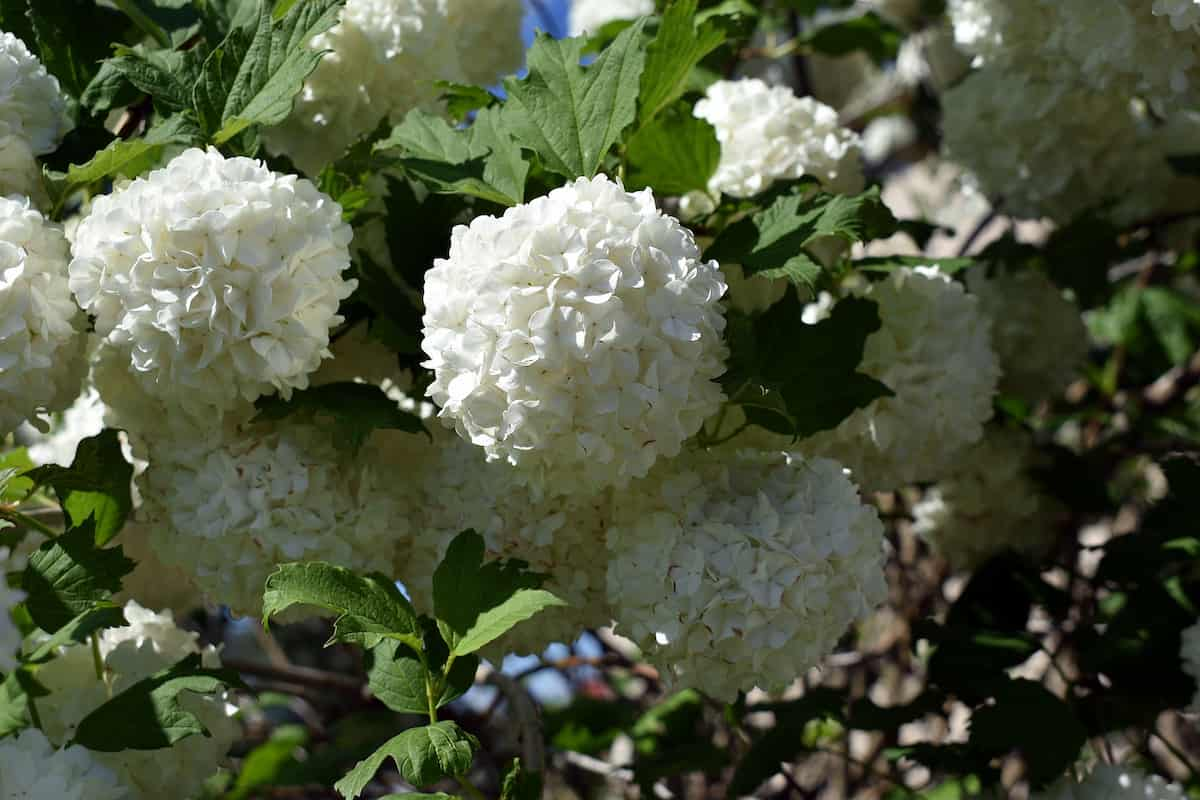
Propagating Viburnum
From cuttings
Many Viburnum cultivars are available, each with unique features and growing requirements. In general, Viburnums like well-drained soil and full sun. They can be grown from seed or propagated by cuttings from established plants. Viburnums are easy to grow, but they require attention to keep them in good shape. Take cuttings of healthy growth during the dormant season.
Cut 10 to 12-inch long stems from the desired plant and remove any brown or dead sections. Make sure the cutting is firm and has a smooth surface. Prepare a new pot filled with moist sphagnum moss and insert the cutting into the center of the moss. Secure it in place with a small rock or chopstick. Place the pot in a shady location and wait until roots form. Once roots have started to develop, water sparingly every other day until new growth begins to appear. It could take up to two weeks.
From seed
To propagate Viburnum plants from seed, start by collecting the seeds in late fall or early winter. Place the seeds in a paper towel or piece of cloth and cover them with another wet towel. Place the package warmly and let it soak for 12 to 24 hours. After soaking, carefully remove the seeds from their covering and spread them on a tray or plate.
Rinse the seeds under cool water and place them in a container. Cover the seeds and place them in a dark location. Once roots have formed, transfer the container to a sunny location and keep it moist but not wet. Once plants are established, they can be moved into their final growing space.
Transplanting Viburnum seedlings
To transplant a Viburnum seedling, ensure the soil is moist but not soggy. Remove any roots that have grown over the edge of the potting mix. If the soil is too dry, add a small amount of water before transferring the plant. Next, gently loosen the soil, carefully pulling them out of the pot.
Be sure to avoid damaging the roots during removal; if necessary, wrap them in plastic and place them in a container filled with fresh potting mix. Fill the new pot with fresh soil and evenly distribute the roots. Place the transplanted seedling onto this soil bed and gently press down until firm. Mist occasionally to help keep roots wet until they establish themselves in their new home.
In case you missed it: How to Grow and Care for Cyclamen Indoors: A Beginners Guide
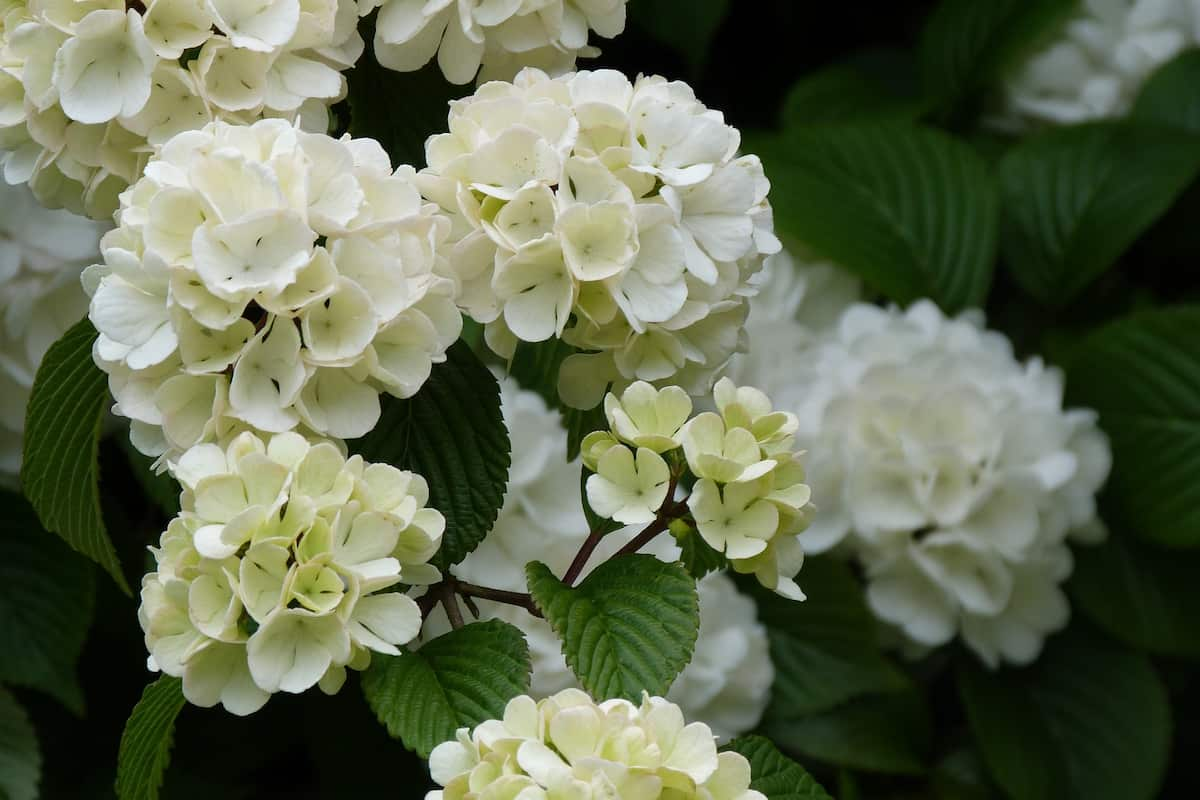
Viburnum plant care
Fertilizer requirement for growing Viburnum
Fertilizer requirements for growing Viburnum plants vary depending on the climate and soil type where the plants are being grown, but generally, these plants require a nitrogen-rich fertilizer. A balanced fertilizer containing nitrogen and phosphorus will give the best results. Other beneficial nutrients to Viburnum include potassium, magnesium, sulfur, and calcium. Most experts recommend fertilizing your Viburnum plants every three to four weeks during the spring and summer.
Fertilize in the early morning or late evening, when the plant’s roots absorb nutrients. If you fertilize your Viburnum plant too much, it may not get the nutrients it needs to grow. Over fertilization can cause lush growth in the beginning, but over time it will cause the plant to become weak and susceptible to diseases.
To remedy this problem, you’ll need to undo any damage and provide your Viburnum with the proper fertilizer. Start by reading the label on your fertilizer container. If you want to fertilize using liquid fertilizers, dilute them before applying them to the soil. Finally, water your plants well after applying fertilizer and watch for signs that they are starting to recover lush growth, fewer leaves and an increase in flowers will all indicate a successful fertilization process.
Viburnum plant care in winter
Viburnum flowers are very showy, and the blooms can last for several weeks. There are many different cultivars of Viburnum available to choose the one best suited to your climate and growing conditions. To grow Viburnum plants successfully in cold climates, you must protect them from frost damage. You can do this by planting them in a sheltered location or covering them with a thick layer of mulch.
When planting Viburnums, ensure they are well-drained and have plenty of nutrients available for growth. You should amend the soil with compost before planting and regularly add water during active growth. Viburnums do not like wet feet, so ensure they have good drainage capabilities when planted indoors or outside in cold climates.
In case you missed it: How to Grow and Care for Hydrangeas: A Beginners Guide to Planting to Harvesting
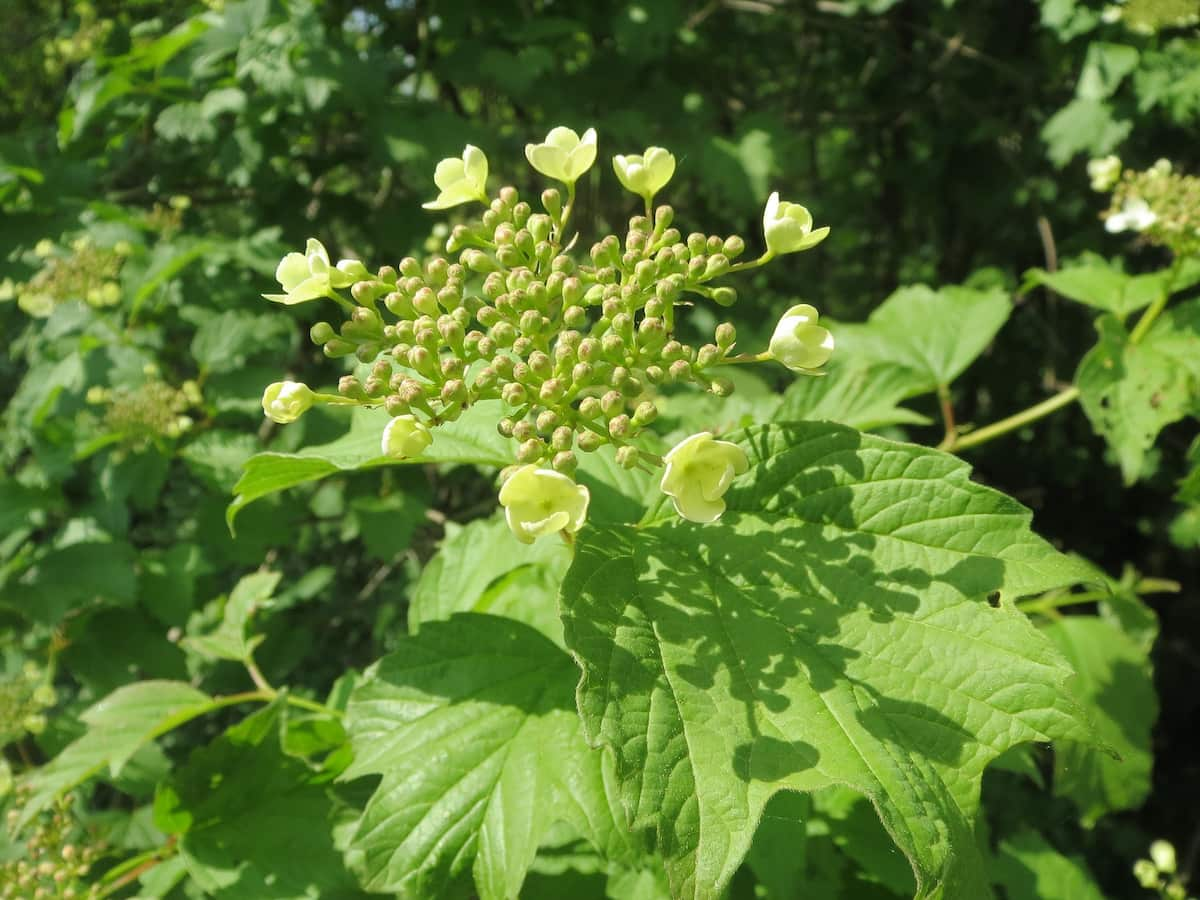
Pruning Viburnum plant
Viburnum bushes can be pruned at any time of the year, but late winter is a good time to do a major pruning job. When you are ready to do your pruning, first make sure that the Viburnum has been cut back hard to within about 2 or 3 inches of the ground. You don’t want any long bare stems remaining. After the Viburnum has been cut back, take a look at it and decide what needs to be done. If there are any dead or diseased branches, remove them.
The lower branches grow horizontally from the main stem. These branches should be cut back so that they are no more than 1/2 inch in diameter at their base and should not cross over other branches. If there are clusters of flowers on one side of the plant rather than evenly distributed throughout, then some growth may need to be removed from that side of the shrub so that all of the flowers will have an equal chance of being pollinated by bees.
Pests and diseases of Viburnum and their control
- Viburnum is a popular tree for landscaping, and it can provide wonderful additions to any garden. However, Viburnums are susceptible to pests like other plants in the landscape.
The Japanese beetles attack young plants and leaves, causing damage that can be difficult to see until it’s too late. There are many ways to control Japanese beetles, including insecticides and traps. - The spider mite is another common pest of Viburnum. These tiny creatures feed on plant tissues and can cause significant damage if not controlled. One way to control spider mites is to use a variety of sprays that contain insecticidal properties. You can also treat areas where you suspect spider mites are present with horticultural oil or insecticidal soap.
- Scale insects are also a common pest of Viburnums. It can feed on plant sap and can cause damage by making leaves soft and distorted and sucking out plant water resources necessary for growth. Scale insects can be controlled by using a variety of pesticides or natural controls, such as parasitic wasps or aphids.
- There are many diseases of Viburnum plants, but most can be controlled with proper care. Viburnum leaf scorch is a common problem caused by several different pathogens. The symptoms include wilting and yellowing of the leaves, which may eventually turn brown and die. The best treatment is often the foliar application of an approved fungicide.
- Leaf spot symptoms include small spots on the leaves that turn brown or black and may cause the leaves to curl up. A vaccine is available to help protect against these viruses, but treatment is typical with an approved fungicide.
- Brown rot is caused by a fungus affecting many woody plants. Brown rot causes the bark to break away in large sheets from the trunk or branches, leading to loss of vascular tissue and death of the plant. There is no cure for brown rot; all affected plants must be removed and treated with an approved fungicide.
In case you missed it: How to Grow and Care for Geraniums in Pots: A Beginners Guide to Planting to Harvesting
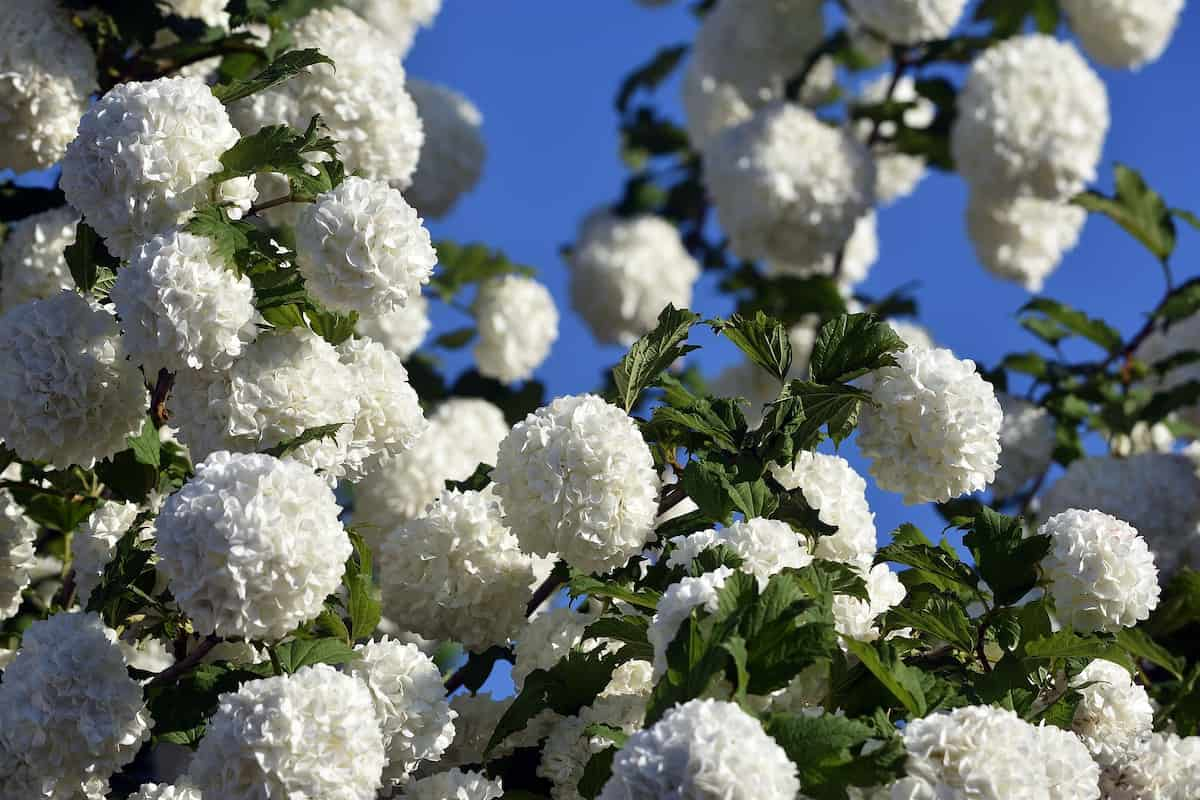
Conclusion
Viburnum is a beautiful, low-maintenance shrub that can be easily grown in most regions. Viburnums are hardy plants that tolerate various soils, temperatures, and moisture levels. Viburnums will thrive in most climates with plenty of sunlight and water. They come in various shapes and sizes, have beautiful flowers that last for weeks or even months, and can be planted almost anywhere there’s soil. This article teaches you how to successfully grow Viburnum plants so you can enjoy their beauty all summer.
- Broccoli Seed Germination and Selection
- Asparagus Seed Germination and Variety Selection
- Seasonal Flower Gardening: Best Practices for Spring, Summer, Fall, and Winter
- How to Grow Hibiscus from Flower
- Plantation Ideas for Home Decoration: A Beginners Guide
- Flower Garden Designs and Layouts for Beginners
- Planting and Spacing Techniques in Papaya: A Beginner’s Guide
- Growing Gold: Essential Techniques for Planting Pineapples
- How to Make Kalanchoe Plant Bushy: Home Remedies and Solutions
- 11 Reasons Why Your Gardenia is Not Blooming: Home Remedies and Solutions
- Eco Elegance: The Guide to Designing a Drought-Tolerant Landscape
- Gardening on a Slope: Strategies for Hillside Landscaping
- Nourish and Flourish: Top Organic Mulches for Thriving House Plants
- Everything You Want to Know about Indian Mogra Flower: Discover Uses and Growing
- Green Thumb Success: Expert Tips for Cultivating Greenhouse Pumpkins All Year Round
- Maximize Growth & Flavor: The Ultimate Guide to Companion Planting in Herb Gardens
- How to Control Rhododendron Problems Naturally: Home Remedies and Organic Ways to Fix Them
- Natural Magic: The Remarkable Benefits of Cinnamon for Plants
- Best Steps to Revive Dying Tulip with Natural and Organic Treatment
- 10 Reasons Why Your Angel Trumpet is Not Blooming: Remedies and Treatment
- How to Fix Periwinkle Leaf and Flower-Related Problems: Natural Remedies and Solutions
- How to Fix Zinnias Leaf and Flower Problems: Discover Natural and Home Remedies
- Organic Steps to Induce Lemon Tree Flowers: A Comprehensive Guide
- Bloom Booster: Crafting the Perfect Homemade Bougainvillea Fertilizer
- Optimizing Growth: A Guide to Applying NPK Fertilizer for Potted Plants
- 10 Best Homemade Fertilizers for Rubber Plant: DIY Recipes and Application Method
- How to Boost Female Pumpkin Flowers: Effective Steps for More Flowers and High Yields
- Transform Your Indoor Garden: Top Benefits of Pink Salt for Houseplants
- 10 Best Homemade Fertilizers for Peacock Plants (Calathea): Easy DIY Guide
- Unlock Blooms: 9 Reasons Why Your Potted Chrysanthemum is Not Blooming
- 8 Reasons Why Your Potted Hibiscus is Not Blooming: Fix it with Simple Solutions
- Unlock Blooms: 9 Key Reasons Your Potted Frangipani Won’t Flower
- 10 Reasons Why Is My Ice Plant Not Blooming: Remedies and Treatment
- 10 Reasons Why My Potted Hydrangea Not Blooming: Treatment and Remedies
- 10 Reasons Why is My Wisteria Not Blooming: Remedies and Treatment
- 10 Reasons Why is My Goldfish Plant Not Blooming: Remedies and Treatment